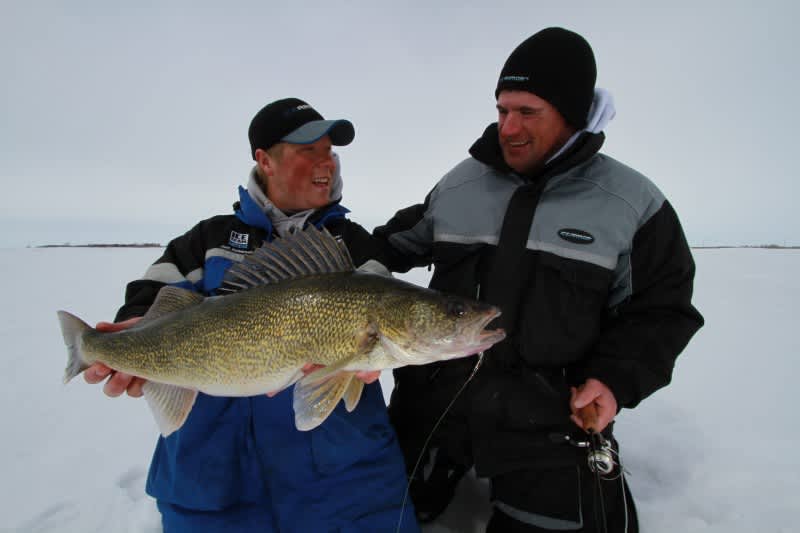Ice Team Tips: First-ice Walleyes
Ice Team 10.17.13

Minnesota’s fall weather is upon us, bringing some of the best open water fishing of the year. Most of my time these days is spent chasing walleyes on Leech Lake, which is a massive body of water. Because I so frequently there, I’m often asked where I fish first ice on such a big lake. My answer is always the same.
My ice-season preparation starts now. The fish have moved into the shallow flats area, which is very similar to the spring bite. Keep an eye out for “cabbage weed” and “sand grass” areas. In most cases walleyes will set up on the inside of the cabbage weed, roaming the flats over the sand grass. During this open water period I stay super-mobile when trying to locate large schools of fish. Once I locate the schools of fish I will lay GPS coordinates down and will mark them as fall locations.
As the season progresses I will continue to stay on top of the large schools. Once we have safe ice, these are the areas I will start my first ice expeditions. The walleyes are generally in these same areas but I always keep in mind the mobility and efficiency aspect of fishing.
Always remember to pack light! Here is my setup:
- Clam one-man shelter
- Two fishing rods
- Vexilar
- GPS
- Bait bucket
- Life jacket
- Ice picks
- Clam Torch Light
- Clam ice auger conversion kit
- A few simple release tools
Your system needs to be simple and light. Always consider ice conditions and make safety your number-one priority.
Let me go into a little more detail on why I use the products above. The Clam one-man shelter is light and easy to pull. My fish house is equipped with the light stick. Often this time of year it’s the early mornings and late evenings that are the key times, so lighting is a must. The one-man shelter also provides just enough room to carry all of the equipment I have.
I have two rods. One is set up with a jigging spoon like the blade jig and the other is set up as a bobber rig. During the search process I will only use my jigging rod. Once I have located the spot I think will be best for prime time, I will settle down and drill two holes utilizing my bobber setup. During the search process my Vexilar will help locate not only biting fish, but also non-active fish, which will later bite during those prime times.
The bait bucket is a spill-proof bucket, which helps keep my bait fresh and alive without having water spilled over everything. The Clam Torch Light is one of the nicest head lamps I have used and is a tool that I use in so many dark fishing situations. In the past it was either a hand auger or a big motor auger. The problem with the hand auger is I found myself not drilling as many holes, and the problem with the motor auger is it was heavy and took away from the light, mobile aspect that time of year. Both did the job, but not as efficiently and as lightly as the new ice auger conversion kit. This is truly a special piece of equipment for the early ice angler. I can drill tons of holes and it is lighting fast!
This time of year I’m always fishing with a partner for safety. A life jacket and ice picks are a must! Take time this fall and get out, locate some large schools of fish, and get ready for that first-ice bite—which is one of the best bites of the year!
Talk more with Jeff at www.LeisureOutdoorAdventures.com.

